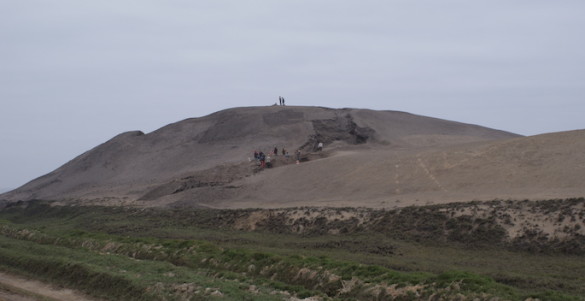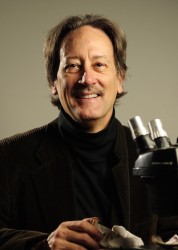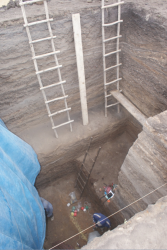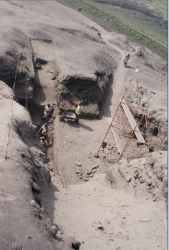
A Vanderbilt-led archaeological dig at a pair of ritual temple mounds called Huaca Prieta and Paredones near Peru’s northern coast is beginning to yield new information about the lives of early Americans.

The structures, initially believed to be 5,000 years old, date back to the dawn of Andean civilization and are notable for the wealth of organic remains found there. “The organic remains are extremely well preserved, because it’s a desert setting. There are a lot of seafood remains, crop remains like corn, chili peppers and beans,” said Tom Dillehay, Rebecca Webb Wilson Distinguished Professor of Anthropology, the excavation’s project director. “And, most importantly, there are early cotton textiles, perhaps the earliest in the Americas, some of which are decorated either by the weaving technique or by colored dyes in geometric patterns or stripes.”
The area was first excavated in the 1940s by Junius Bird, then the curator of the American Museum of Natural History, whose discoveries there were among the first to be radiocarbon dated. It remained untouched until 2006, when Dillehay and the late Peruvian archaeologist Ducco Bonavia decided to reopen it. They learned that the site was much older than they realized – nearly 7,600 years old — and was abandoned about 3,800 years ago, during an age called the Preceramic Period.

They found thousands of small, deliberately cut or torn and folded scraps of fabric in the temple. “There’s no evidence at that early time period that they were used for clothing, fishnets, bags or ponchos or anything like that. Later on, those kinds of functional items come along, but during that early time period they seem to be deliberately made and torn for the purpose of ritual offerings,” Dillehay said. One of the team’s textile experts, based at George Washington University, discovered that the blue dye used in the fabric is the oldest known use of indigo in the world and dates back more than 6,000 years.
Approximately 50 researchers have contributed to the project over the years, including several others from Vanderbilt.

Larisa DeSantis, a paleontologist and assistant professor of Earth and environmental sciences, usually analyzes the chemical signatures and microscopic wear patterns on teeth of ancient animals to learn more about what they ate. This time she applied those techniques to the human teeth uncovered at the site to understand the ancient inhabitants’ diet and how it may have changed over time. Meanwhile, Tiffiny Tung, associate professor of anthropology, analyzed the DNA found within the human skeletons discovered there.
Steven Goodbred, professor and chair of Earth and environmental sciences, studies the relationship between terrain and waterways. His role was to reconstruct how the environment changed over the course of the 10,000 years that the site has been occupied by humans. Those changes would have touched nearly every part of the inhabitants’ lives—the climate, landscape, vegetation and the behavior of the rivers that provided fresh water.
Further Vanderbilt findings will be published in Science later this fall, and will be included in Dillehay’s upcoming book from the University of Texas Press, Where the Land Meets the Sea.